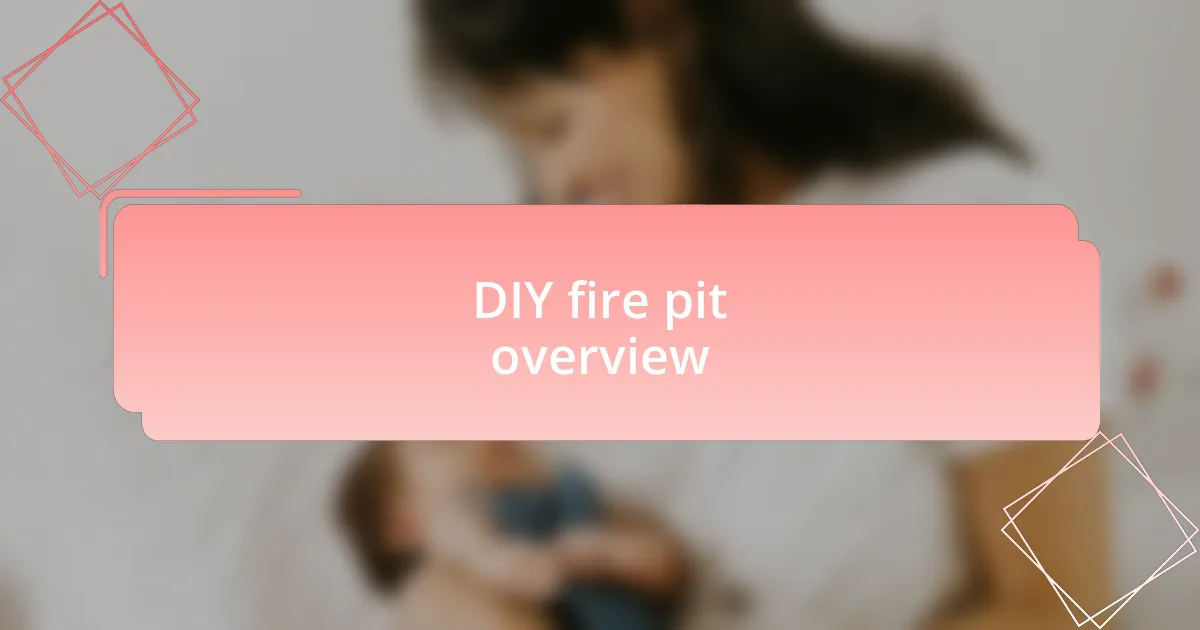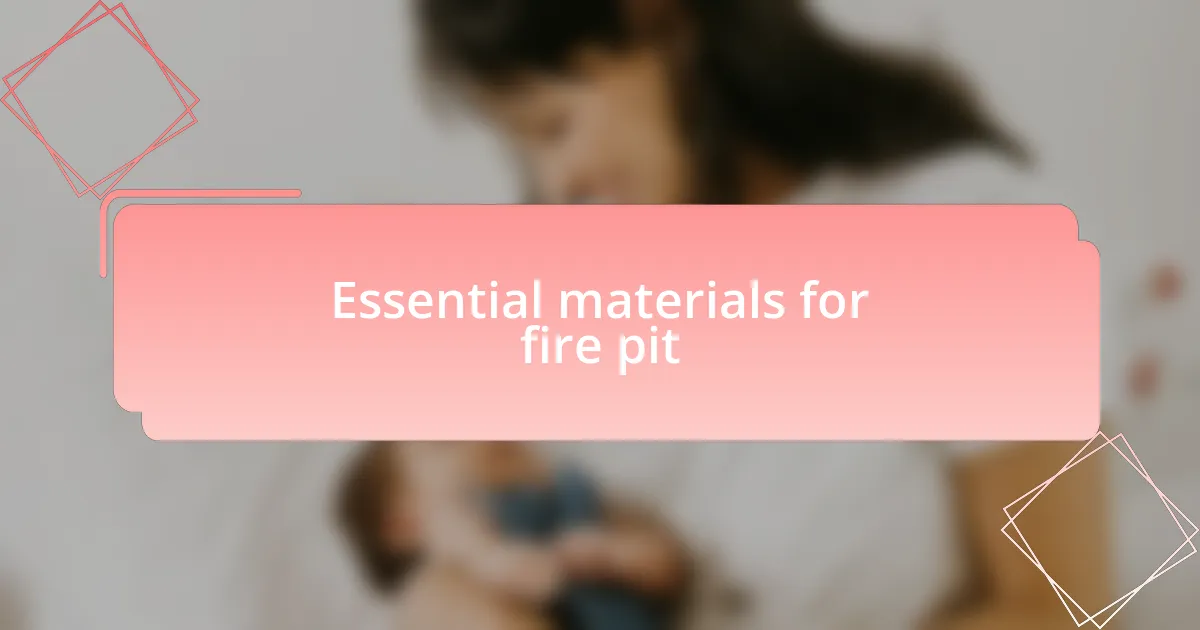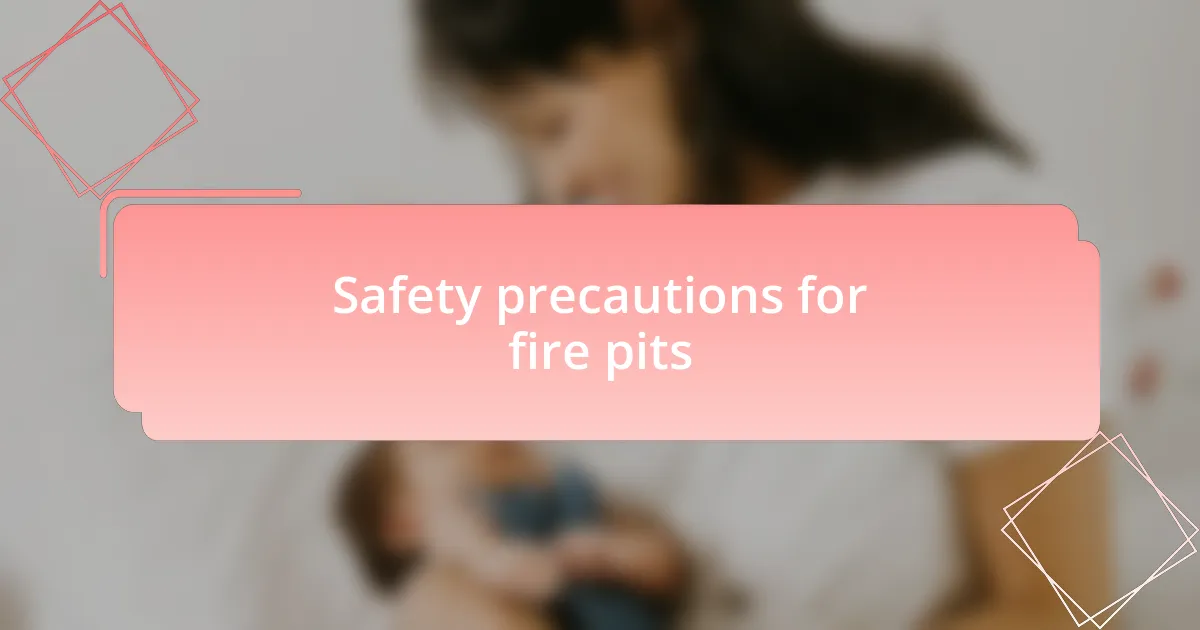Key takeaways:
- Creating a DIY fire pit enhances outdoor spaces and fosters community experiences.
- Essential materials include sturdy stones, fire-resistant gravel, and a steel fire bowl for safety and functionality.
- Safety precautions are crucial, such as maintaining a clear zone, having extinguishing resources nearby, and ensuring the fire is completely out before leaving.
- Personal investment in the project brings a sense of accomplishment and lasting memories with loved ones.

DIY fire pit overview
Creating a DIY fire pit is not only a fun project but also a rewarding way to enhance your outdoor space. I remember the first time I sat around my fire pit; the crackling flames and the warmth on a chilly evening sparked a sense of community and joy. Have you ever experienced that comforting glow while sharing stories with family?
When planning your fire pit, consider the materials and design that best fit your home and aesthetic. I opted for a simple stone structure that blends seamlessly with my backyard while keeping safety in mind. Selecting the right spot can dramatically affect the ambiance—have you thought about how the location might impact your gatherings?
A DIY fire pit can be tailored to your preferences, allowing for creativity and personal expression. As I built mine, I felt a sense of accomplishment with each brick laid, transforming an idea into a cozy retreat. It’s incredible how small projects like these can bring us closer to nature and create lasting memories with loved ones.

Essential materials for fire pit
When I set out to build my fire pit, I quickly realized that the right materials make all the difference. At the core of my fire pit were sturdy stones, which not only provided durability but also added a rustic charm to the design. Do you remember the feel of cool stone beneath your fingertips? It amazed me how much character each rock contributed.
Next, I chose fire-resistant gravel for the base. This choice not only ensured safety but also enhanced drainage, keeping the area around the fire pit dry. I distinctly recall the satisfying crunch of gravel under my feet as I worked—there’s something grounding about using natural materials in your project, don’t you think?
Lastly, I made sure to include a steel fire bowl. This was a game-changer; it contained the flames while enhancing the heat distribution. I vividly remember the first time I lit the fire—it was mesmerizing to watch the flames dance within the bowl, casting flickering shadows on my backyard. I can still hear the laughter of friends filling the air as we gathered around, creating memories that would warm not only our bodies but our hearts.

Safety precautions for fire pits
When it comes to using a fire pit, safety should always be a top priority. I remember the first time I lit a fire in my DIY pit; it was such a thrill. But the reality hit me—it’s crucial to keep a safe distance from overhanging branches or structures. Have you ever thought about how quickly a fire can spread when fuel sources are too close? That moment made me keenly aware of the space around my fire pit and how vital it is to maintain a clear zone of at least 10 feet.
Another important precaution is to keep a bucket of water or sand nearby. I learned this the hard way when my fire burned a bit more intensely than expected one evening. It was a simple act, yet it provided peace of mind knowing I had a way to quickly extinguish any unexpected flare-ups. Wouldn’t it be better to be prepared than to panic? Having those safety measures in place allowed my friends and me to enjoy our evenings without worry.
Lastly, always make sure the fire is completely out before leaving the area. I still vividly remember dousing the last embers with water and watching the steam rise, knowing that our fun was fully contained and controlled. Leaving a fire unattended is like leaving the door open to danger; you just wouldn’t do that at home, right? Being diligent about extinguishing the flames ensures that our beautiful evenings around the fire pit stay joyful and safe.